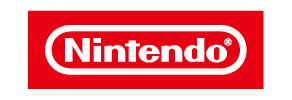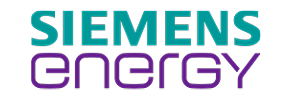Welche Trends 2026 im SAP-Universum wichtig werden

Syntax Boutique @ Scale
Maßgeschneidert für Sie.
Entwickelt für mehr.
Syntax verbindet persönliche Betreuung mit globaler Leistungsstärke. Unsere Boutique @ Scale‑Philosophie richtet sich speziell an den Mittelstand: passgenaue IT‑Strategien, klare Strukturen und messbare Ergebnisse.
Unternehmen, die Syntax vertrauen










Machen Sie Ihr Unternehmen zukunftsbereit mit SAP.
Als SAP Gold Partner begleitet Syntax Ihre komplette Cloud‑Transformation – von Beratung und technischer Umsetzung bis zur KI‑gestützten Analyse. Wir helfen mittelständischen Fertigungs- und Dienstleistungsunternehmen, ihre SAP‑Systeme sicher und agil in der Cloud zu betreiben.
Kundenreferenzen


Niedrigere Kosten.
Höhere Performance.
Maximale Verfügbarkeit.
Syntax modernisiert Oracle‑Datenbanken sicher und effizient. Wir optimieren Leistung, reduzieren Betriebskosten und schaffen resiliente Multi‑Cloud‑Architekturen – maßgeschneidert für Mittelstandsunternehmen.
Branchenlösungen

Manufacturing
Mehr Effizienz in Produktion & Lieferkette – ERP, Cloud & Analytics Lösungen für die Industrie 4.0.

Retail
Verbessern Sie Kundenerlebnisse und Prozesse durch smarte, datengetriebene Technologien.

Private Equity
Top-Performance für Carve-outs und Integrationen – mit Cloud-Architekturen und Echtzeit‑Insights.

Construction
Optimieren Sie Projektsteuerung und Budgetplanung mit integrierten ERP-Lösungen.
FAQ
Wie starte ich mit Syntax FreeMigration+ und der SAP Cloud Migration?
Syntax begleitet Sie Schritt für Schritt – von der ERP-Analyse bis zum Cloud-Go-Live. Optimiert für Mittelstandsunternehmen mit Fokus auf Effizienz und Sicherheit.
Für welche Industrien bietet Syntax passgenaue Lösungen?
Ob Produktion, Bauprojektmanagement oder Retail – Syntax liefert ERP-, Cloud- und Analytics-Lösungen für den Mittelstand.
Wie gelingt eine sichere Cloud Transformation für SAP?
Syntax migriert Ihre Systeme sicher in die Cloud – egal ob AWS, Azure oder OCI – und gewährleistet DSGVO konforme Datenhaltung, hohe Performance und automatisiertes Monitoring.
Wie unterstützt Syntax bei Oracle Datenbankmodernisierung im Mittelstand?
Syntax integriert Cyber Resilience, Automatisierung und Multi-Cloud-Fähigkeit in Ihre Oracle-Umgebung – für maximale Verfügbarkeit, optimierte Performance und Compliance.
Wie begleitet Syntax Carve-outs und Integrationen im Private-Equity-Umfeld?
Syntax beschleunigt IT Carve-outs, Systemtrennungen und Post Merger Integrationen mit Cloud Architekturen und Realtime Insights – für schnelle Transition und Transparenz in Ihrer neuen Organisationsstruktur.
Wo findet man Syntax Deutschland und welche Services bietet der Standort Weinheim?
Syntax Deutschland GmbH hat ihren Hauptsitz im Höhnerweg 2–4 in 69469 Weinheim und betreut Kunden im gesamten DACH-Raum. Unsere Teams entwickeln Cloud, SAP- und Oracle-Lösungen für Mittelstandsunternehmen.




